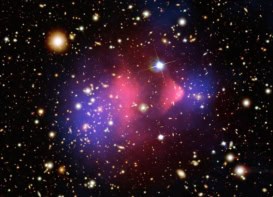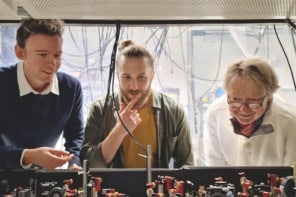A group of German physicists have observed new forms of matter in colloidal plasmas. Gregor Morfill and colleagues from the Max Planck Institute for extraterrestrial physics in Garching discovered stable vortex flows and voids in the plasmas under micro-gravity conditions (Phys. Rev. Lett. 83 1598). The experiments were performed in a series of 51 parabolic test flights and 2 flights on a sounding rocket.
Colloidal plasmas contain three different components – electrons, ions and charged microspheres. Although these unusual plasmas can be studied in the laboratory, researchers have only been able to study two-dimensional effects because gravity can overwhelm the electrostatic interactions between the particles. These interactions are responsible for the unusual properties of colloidal plasmas.
By reducing the effects of gravity for up to six minutes at a time, Morfill and colleagues have been able to observe three-dimensional structures in the plasma, including voids that did not contain any microspheres. The structures they observed included “crystalline plasmas” and “liquid plasmas”. Properties exhibited by the latter included ordered flows and vortices.



